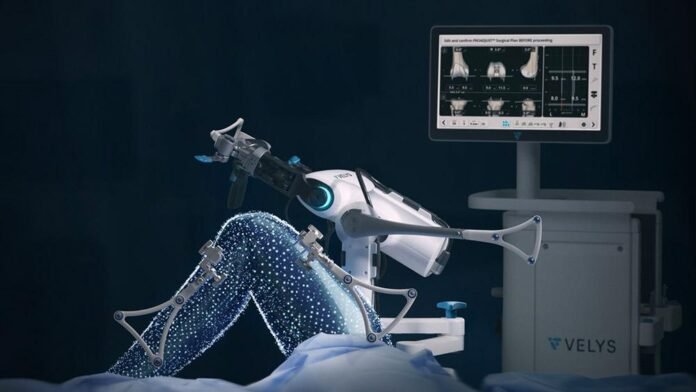Bahrain has made a big leap in medical technology by launching the VELYS robotic device. It is the first of its kind in the Middle East, marking a major milestone for healthcare in the region.
The Royal Medical Services – Military Hospital is leading the way with this new technology. Brigadier General Dr. Shaikh Fahad bin Khalifa bin Salman Al Khalifa, Commander of the Royal Medical Services, highlighted the need to keep up with healthcare advancements. He explained that this initiative fits with Bahrain’s Economic Vision 2030, which aims to strengthen the country’s medical services.
The VELYS robotic device is designed to improve the precision of knee surgeries. It customizes treatment to each patient’s condition. It also provides real-time images, helping surgeons make better decisions during surgery. The robot’s flexibility allows surgeons to move with great precision, removing damaged bone more accurately. This leads to better surgery results and quicker recovery for patients.
Dr. Shaikh Fahad recently used the VELYS device for eight knee replacement surgeries. All of the surgeries were successful. He praised the technology for improving surgical accuracy and speeding up recovery. He also noted that it reduces the resources needed compared to traditional surgery.
Additionally, Dr. Shaikh Fahad emphasized the importance of training doctors to use the new technology. He explained that practical training programs help ensure doctors get the most out of the device’s features. This training is crucial for providing the best care to patients.
The Royal Medical Services continues to provide high-quality healthcare to Bahrain’s citizens and residents. By using advanced equipment and skilled professionals, the hospital maintains its commitment to improving healthcare. The VELYS robotic device is a step forward in making Bahrain’s healthcare system one of the best in the world.
In conclusion, the VELYS robotic device represents a breakthrough in medical technology. It sets a new standard for healthcare in Bahrain and across the Middle East. This innovation shows how technology can improve patient care and surgical outcomes.


